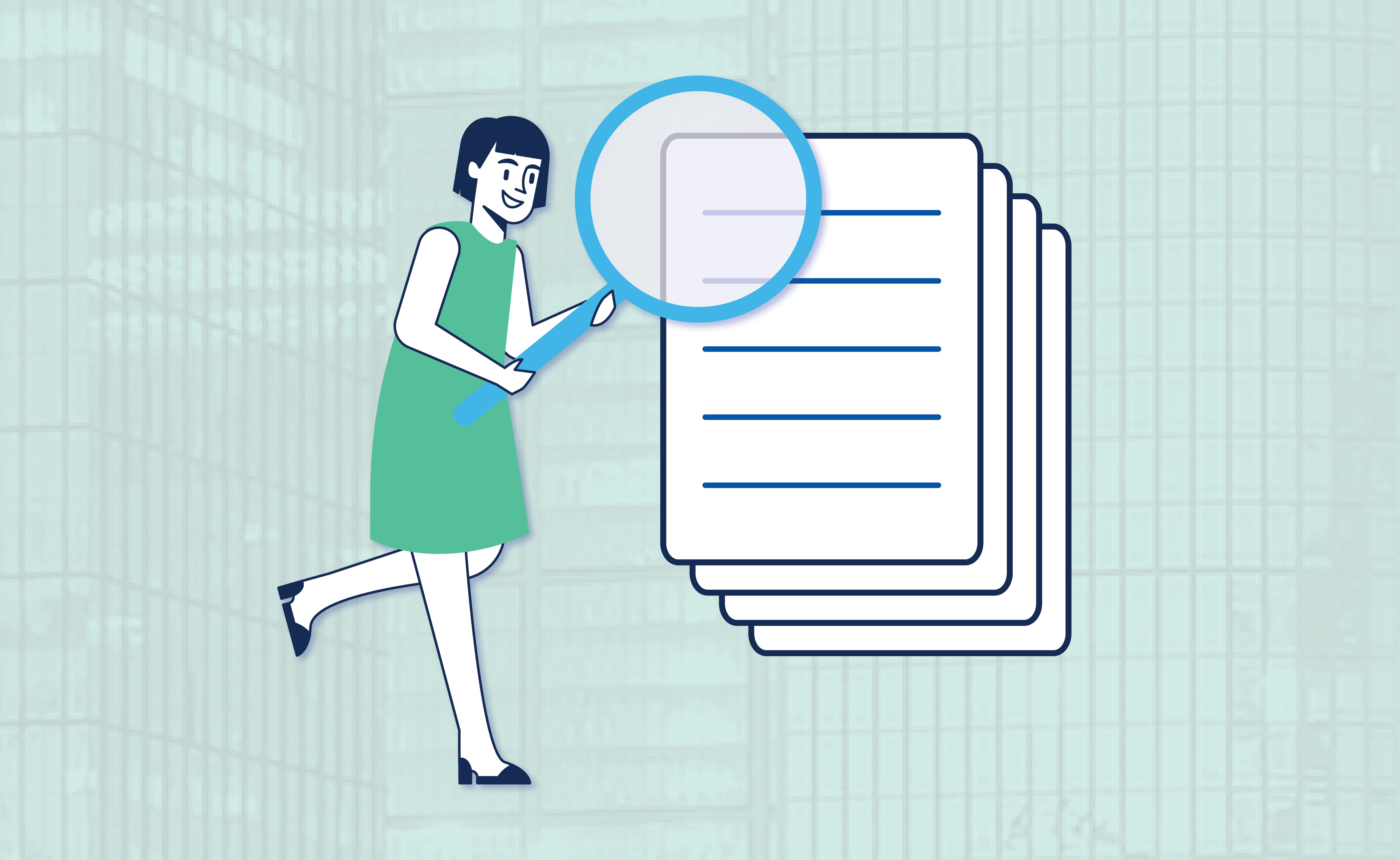Share this
by Matt Waters, CPA on April 27, 2022
For years, corporate accounting teams have been implementing policies and processes for ASC 842 and IFRS 16 lease accounting standards. And they’re not the only ones. Audit firms also diligently preparing for the changes to audit procedures with ASC 842 lease accounting software.
Here are five major areas that companies must focus on today, because auditors will focus on verifying these things in your audit trail.
1. A Complete Collection of Lease Obligations
Firstly, auditors will be looking for a comprehensive collection of lease obligations, which requires companies to mine for lease data throughout the entire organization. This can potentially become a huge issue for companies across all industries. Specifically, collecting equipment (non-real estate) leases can introduce tremendous complexity.
Leases can surprisingly originate from a decentralized, diverse group of departments across the company. Various departments utilize leases with very little impact or involvement from other groups. So, costs are often simply categorized as an expense within the department’s budget. Control of leases may be dispersed throughout the company and visibility is very low as a result.

Is your team aligned on lease accounting & admin?
Let's be better together
To ensure thorough collection of lease data, be sure to include a diverse group of stakeholders in meetings and project communications and examine a wide array of data sources to identify leases. Consequently, various departments that have maintained control of their own lease data will need to become involved in centralizing lease data.
During this process, it is important to get buy-in from the various groups and emphasize the benefits of the drastic change in lease accounting procedures. It is important to note the new process is being implemented due to changes in regulations, rather than a new company policy designed to take away control or autonomy. Another useful method for mining lease data includes sending surveys into the field.
2. Unidentified Embedded Leases
A major risk associated with ASC 842 compliance is overlooking embedded leases. Project teams need to address this issue head-on. The type of lease most often overlooked is an embedded lease. Embedded leases are included as part of a larger agreements.
For example, an embedded lease for alarm equipment could be part of a larger agreement with a monitoring service. Or an embedded lease for servers may be included in a larger IT services contract. Overlooking embedded leases is a major risk associated with compliance. Project teams need to address the issue head-on and straightaway for accurate financial reporting.
See a comprehensive list of potential sources of embedded leases in this white paper, 12 Step Guide to Lease Accounting Compliance.
3. Proper Separation of Lease and Non-Lease Components
Similarly, extracting the right lease components is another challenge, particularly with gross leases and embedded leases. To mitigate risk associated with extracting too much (or not enough) data associated with leases, companies should devise policies to help guide data extraction to determine what exactly constitute lease and non-lease components for compliance standards.
Make it a goal to establish policies regarding the practical expedient to combine or separate components early and document them well. Appropriately abstracting lease and non-lease components into the lease accounting system is critical, and contract language can quickly become complex. However, technology and accounting partners should be able to offer proper guidance companies on this critical step.

Why a pro lease abstractor sticks with CoStar
Choosing the Best Lease Administration Software for Abstraction
4. Inaccurate Key Assumptions and Variables
In various scenarios, lease accounting teams will make key assumptions upfront. These assumptions generate a substantial difference in the initial right of use asset and lease liability that will be recorded upon adoption.
Examples of these key assumptions include reasonably certain assumptions regarding the exercise of options, establishing an incremental borrowing rate and estimates for CPI or other index related increases. Companies should undoubtedly expect auditors to ask for documentation of key assumptions, and they will also look for proof regarding the reasonability and consistent application of the assumptions.
5. Software and Key Data Configuration Problems
Recording all leases on the balance sheet is a complex task, and the system used to-date may not have the capabilities to capture the data elements required for compliance. This is why many companies are choosing to upgrade lease accounting and management software. Quality lease accounting solutions are always a part of an overall lease management system.
The best software solution providers have decades of experience with equipment and real estate leases and offer multiple modules that reach far beyond lease accounting compliance. Selecting a proven and well-established lease management system that includes robust lease accounting capabilities is a strategic move many companies are making now.
While it may be tempting to make radical changes during the transition period, it is best to refrain from major process and system changes that do not relate to lease accounting at this point. Instead, consider a phased project approach.
The first phase, due by the end of the fiscal year, involves connecting existing lease data from operating lease and finance leases to a lease accounting tool for essential functionality. Now is the time to select robust and proven software solutions. Additional phases will roll out at later dates as determined by company strategy.
Early adopters have consistently reported that more time is crucial to reaching compliance. However, by focusing on a phased approach with an eye on these high-risk issues, companies may establish a critical path to success and ultimately make next year’s audit more risk averse.
If you need some back up in the intricate compliance process, look no further than CoStar Real Estate Manager. Schedule a demo today to see how CoStar will get your company over the compliance standard finish line.
Share this
- Lease Accounting Software (90)
- ASC 842 (83)
- Accounting Teams (53)
- Lease Administration Software (27)
- Retail Tenants (16)
- Commercial Real Estate (14)
- Lease Management (13)
- Real Estate Teams (10)
- ESG (8)
- Market Data and Analytics (8)
- Success Stories (8)
- News and Media Coverage (5)
- Transaction Management Software (2)
- frs 102 (2)
- Customer Success (1)
- Office Tenants (1)
- December 2025 (1)
- September 2025 (1)
- July 2025 (2)
- June 2025 (4)
- May 2025 (2)
- April 2025 (2)
- March 2025 (6)
- February 2025 (3)
- January 2025 (4)
- December 2024 (1)
- October 2024 (4)
- September 2024 (2)
- August 2024 (4)
- July 2024 (3)
- June 2024 (3)
- May 2024 (4)
- April 2024 (1)
- February 2024 (1)
- December 2023 (4)
- November 2023 (6)
- October 2023 (4)
- September 2023 (2)
- August 2023 (2)
- July 2023 (3)
- May 2023 (2)
- March 2023 (1)
- February 2023 (3)
- January 2023 (1)
- December 2022 (3)
- November 2022 (4)
- October 2022 (4)
- September 2022 (1)
- August 2022 (4)
- June 2022 (1)
- May 2022 (4)
- April 2022 (8)
- March 2022 (3)
- February 2022 (1)
- January 2022 (2)
- November 2021 (2)
- October 2021 (2)
- September 2021 (3)
- August 2021 (15)
- July 2021 (3)
- June 2021 (1)
- May 2021 (1)
- April 2021 (3)
- March 2021 (1)
- January 2021 (1)
- December 2020 (3)
- November 2020 (1)
- October 2020 (2)
- September 2020 (2)
- August 2020 (3)
- July 2020 (2)
- June 2020 (3)
- May 2020 (1)
- April 2020 (1)
- March 2020 (1)
- February 2020 (1)
- December 2019 (1)
- October 2019 (1)
- September 2019 (2)
- August 2019 (3)
- July 2019 (2)
- April 2019 (69)
- October 2018 (1)
- August 2018 (1)
- July 2018 (1)
- June 2018 (1)
- May 2018 (1)
- April 2018 (2)
- March 2018 (3)
- February 2018 (2)
- December 2017 (1)
- August 2017 (3)
- June 2017 (2)
- May 2017 (2)
- April 2017 (1)
- March 2017 (2)
- January 2017 (2)
- November 2016 (2)
- July 2016 (1)
- June 2016 (1)
- July 2015 (1)
- March 2015 (1)
- June 2014 (1)
- April 2014 (11)
- October 2011 (1)
You May Also Like
These Related Stories

Don’t Let Lease Accounting Software Catch You Off Balance

The Intersection of Tax and ASC 842 Lease Accounting




